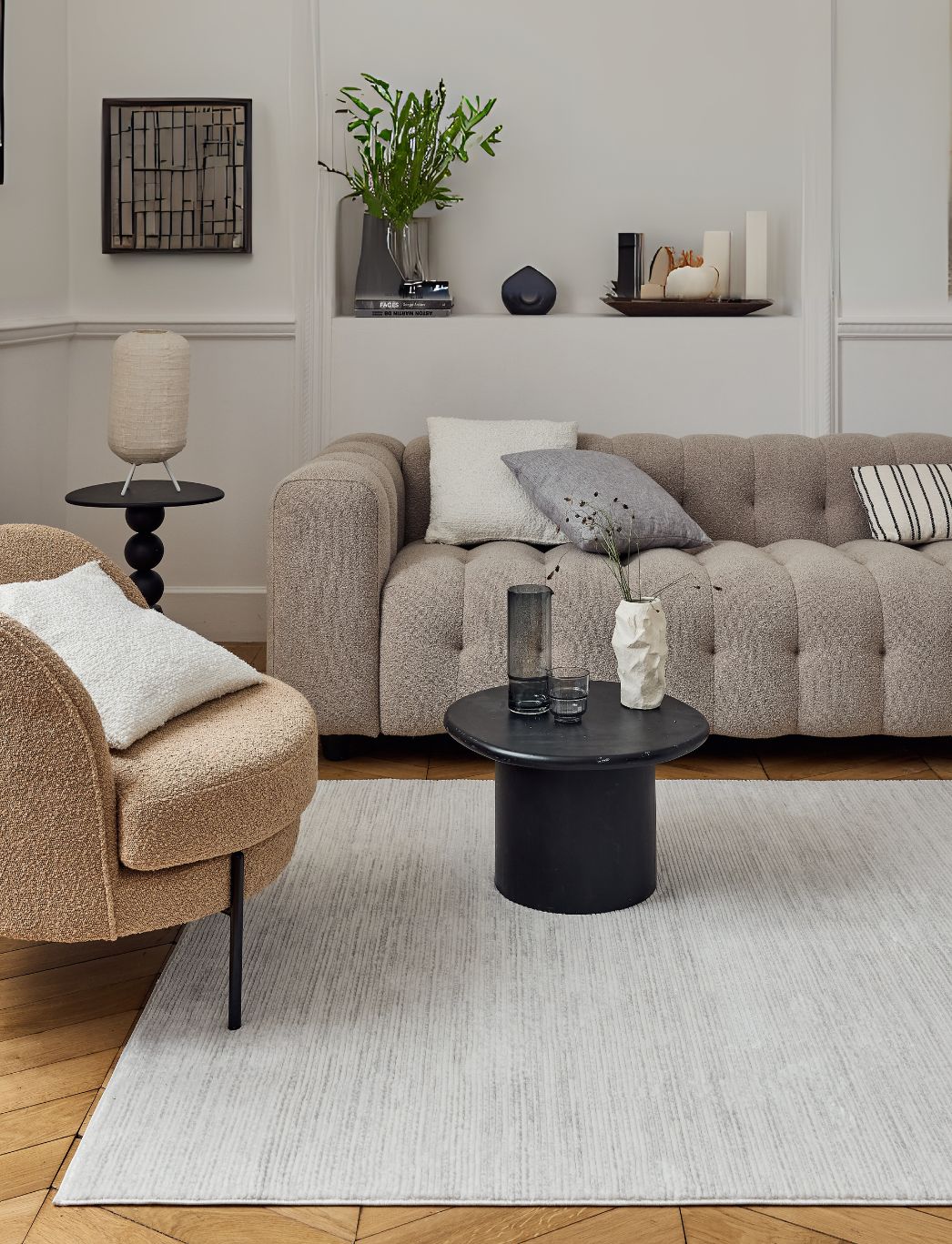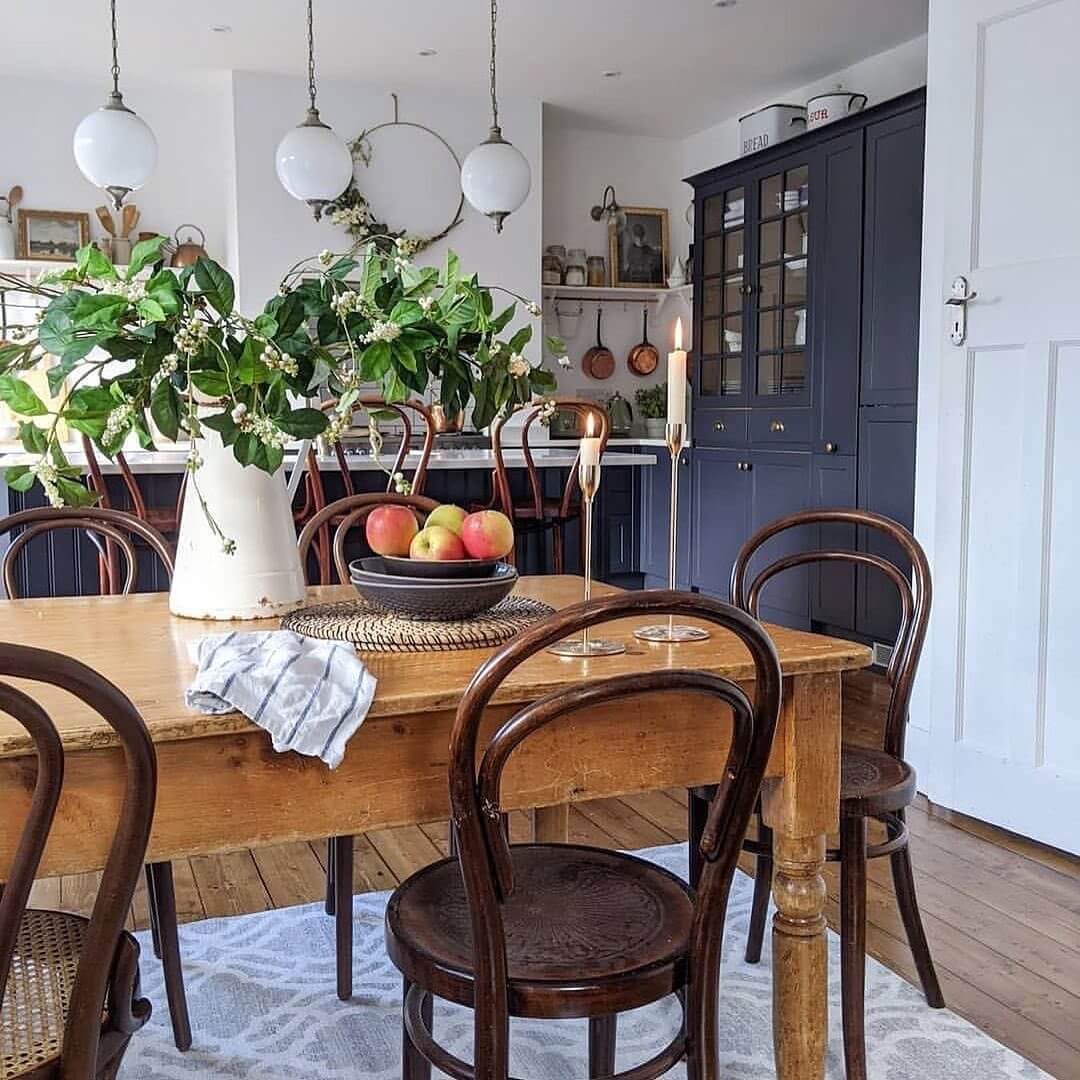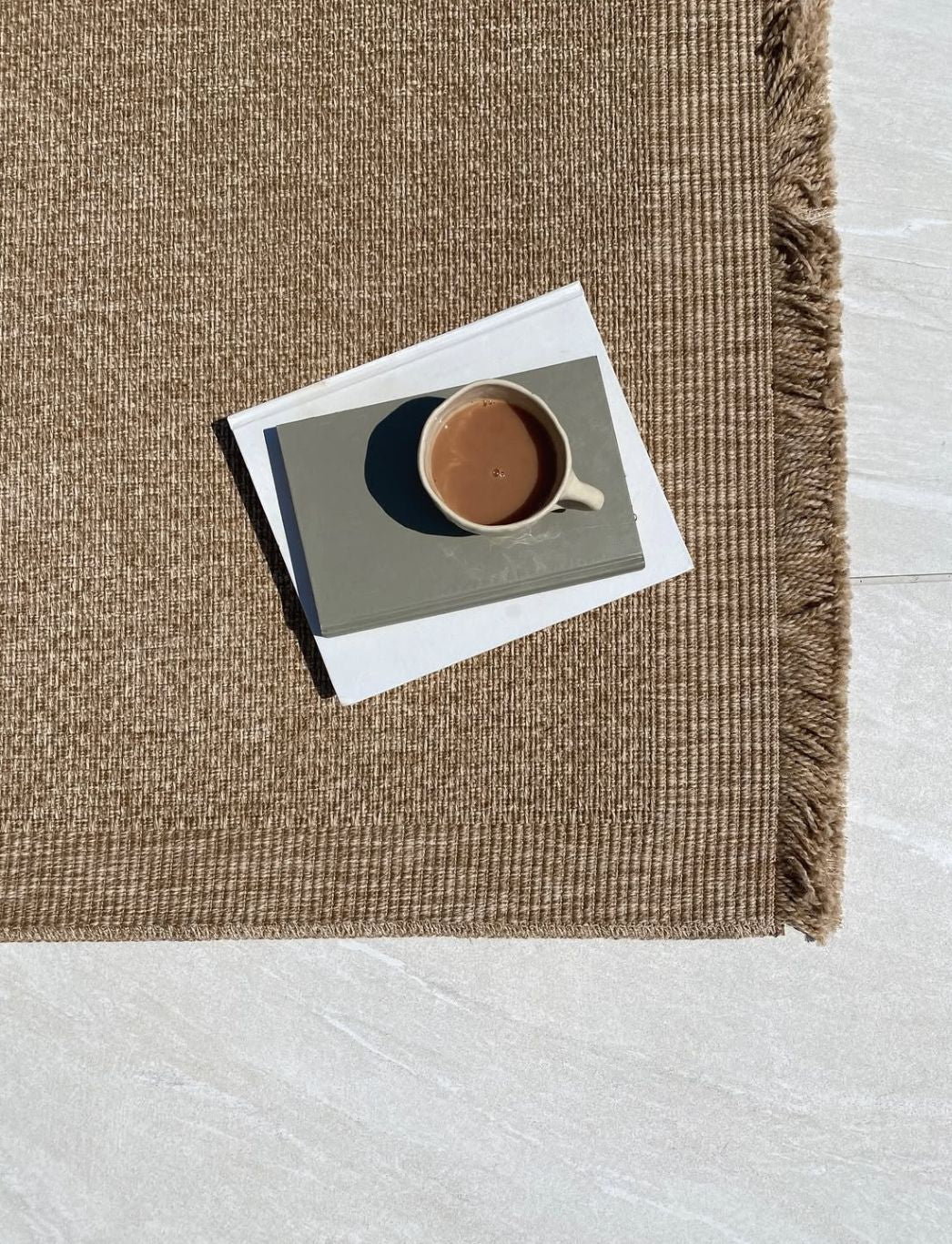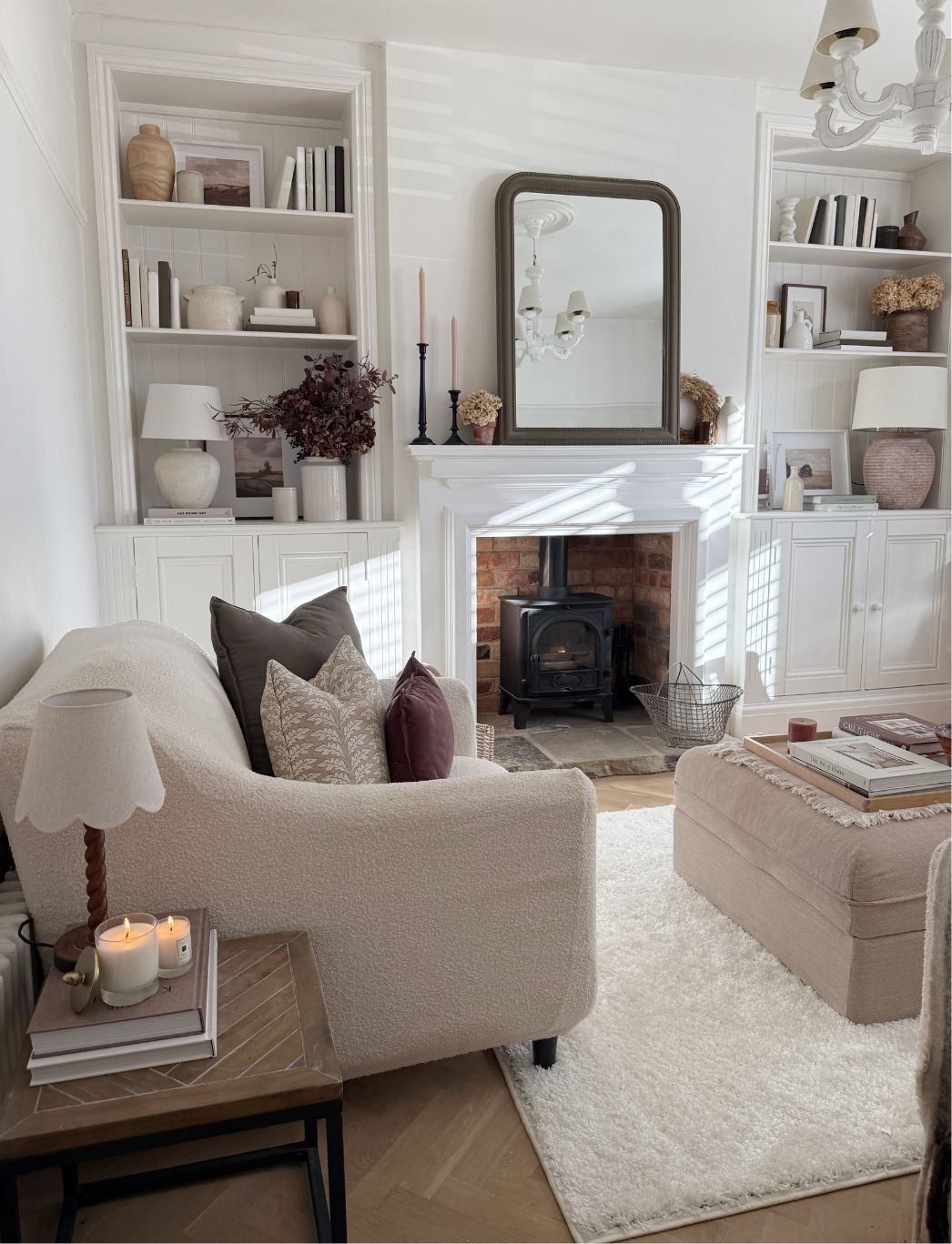Aromatherapy and Rugs: Creating a Relaxing Ambiance for Colder Months

There's nothing quite like coming home to a warm and inviting space that helps you unwind and escape the chilly weather outside. Aromatherapy, the practice of using essential oils to promote well-being and relaxation, can be a powerful tool in creating a cosy atmosphere.
When paired with the right rug, you can transform your home into a sanctuary of warmth and comfort. Let’s explore the synergy between aromatherapy and rugs, and how they can work together to create a relaxing ambience during the colder months.
The Power of Aromatherapy
Aromatherapy has been used for centuries as a natural way to enhance physical and emotional well-being. Essential oils, derived from various plants, are known for their therapeutic properties and are used in aromatherapy to address a wide range of issues, from stress and anxiety to sleep disturbances and mood enhancement.
When diffused into the air, these essential oils can create a soothing and comforting atmosphere in your home. Pair them with cosy rugs as per your preferences and you have the perfect winter ambience.

Choosing the Right Essential Oils
Cosy home décor can only do so much. To set the stage for a relaxing ambience in your home, start by selecting essential oils that are known for their calming and warming properties. Here are a few options to consider:
Lavender
Lavender essential oil is a classic choice for relaxation. Its floral and earthy scent can help reduce stress and anxiety, making it perfect for winding down after a long, chilly day.

Cedarwood
Cedarwood essential oil has a woody and grounding aroma. It's ideal for creating a warm and comfy ambience, perfect for those winter nights by the fireplace.
Vanilla
Vanilla essential oil has a sweet and comforting scent that can evoke feelings of warmth and happiness, making it an excellent choice for creating a snug environment.

Cinnamon
Cinnamon essential oil has a spicy and invigorating scent. It can add a touch of warmth and a cosy feel to your space, making it perfect for the colder months.
There are various methods for diffusing essential oils into your living space, each with its own benefits. You can use essential oil diffusers, reed diffusers, or even make your own room sprays. Choose a method that suits your preferences and the size of your room to ensure that the aroma fills the space effectively.
Harmonising Aromatherapy and Rugs
The synergy of aromatherapy and rugs is a delightful and effective way to enhance the ambience of your home during the colder months. By carefully selecting both essential oils and rugs, you can elevate your space into a haven of comfort and relaxation.

Selecting the Right Essential Oils and Rugs
Choose essential oils known for their calming and warming properties, such as lavender, cedarwood, and cinnamon. These scents can harmonise beautifully with the plush, warm texture of your rugs, setting the stage for a cosy and relaxing environment.
Texture, Color, and Design
Rugs play a pivotal role in adding warmth to your space, both visually and physically. The choice of rug material, colour, and design can significantly impact the ambience. Deep, earthy tones and intricate patterns can create a warm and inviting atmosphere, perfectly complementing the aromatherapy experience.

Layering and Practical Benefits
Consider layering rugs to add depth and warmth to your room while reducing echo and noise. Rugs also act as a practical barrier to trap heat and keep your space warmer during the colder months, adding both aesthetic and functional value.
Harmony in Your Home
By strategically placing your essential oil diffuser near your rug, you can harmonize the soothing scents with the cosy warmth of your rug, creating a unified and inviting ambience that's perfect for winter. This holistic approach to home decor ensures that your living space becomes a haven of comfort and relaxation.
Order the Perfect Rugs for Aromatherapy Sessions from The-Rugs
By seamlessly uniting aromatherapy and rugs, you can achieve a perfect balance that enhances the ambience of your home during the colder months. The soft, warm textures of your rugs complement the soothing scents of essential oils, creating a harmonious and inviting atmosphere. Embrace the synergy of these two elements to make your home a warm and welcoming retreat this winter.
Get as many rugs as you need from our sale at The Rugs. We offer a variety of options that can suit any aesthetic!

What is Aromatherapy Humidifier: Combining Moisture and Fragrance
An aromatherapy humidifier is a dual-purpose device that adds moisture to the air while dispersing essential oils. These innovative appliances blend the benefits of humidification and aromatherapy, creating a more comfortable and fragrant living environment. By using an aromatherapy humidifier, you can alleviate dry air issues such as skin irritation and respiratory discomfort, while simultaneously enjoying the therapeutic effects of essential oils. Many models allow you to control humidity levels and oil intensity, providing a customised aromatherapy experience.
What is Aromatherapy Diffuser: Dispersing Wellness Through Scent
An aromatherapy diffuser is a device designed to disperse essential oils into the air, filling your space with therapeutic fragrances. These appliances use various methods, such as ultrasonic vibrations or heat, to break down essential oils into micro-particles and release them as a fine mist. Aromatherapy diffusers can help create a calming atmosphere, improve air quality, and potentially offer health benefits associated with specific essential oils. They come in various sizes and designs, making them suitable for different spaces and aesthetic preferences.

What is Aromatherapy Oil: Nature's Essence for Wellbeing
Aromatherapy oils, also known as essential oils, are highly concentrated plant extracts used for their therapeutic properties. These potent oils are derived from various parts of plants, including flowers, leaves, roots, and bark, through processes like steam distillation or cold pressing. Each aromatherapy oil has unique properties and potential benefits, ranging from stress relief and improved sleep to enhanced focus and respiratory support. When used properly, these oils can be a natural way to support physical and emotional wellbeing.

What is the Meaning of Aromatherapy: Healing Through Scent
Aromatherapy is a holistic healing treatment that uses natural plant extracts and essential oils to promote health and wellbeing. This practice is based on the idea that aromatic compounds in essential oils can stimulate smell receptors in the nose, which then send messages through the nervous system to the limbic system — the part of the brain that controls emotions. Aromatherapy aims to enhance both physical and emotional health through the therapeutic use of these natural scents. It can be applied through various methods, including inhalation, topical application, and massage.
What is Aromatherapy for Anxiety: Calming Scents for Mental Wellbeing
Aromatherapy for anxiety involves using specific essential oils known for their calming and stress-reducing properties. This natural approach can help alleviate symptoms of anxiety by promoting relaxation and emotional balance. Common oils used for anxiety relief include lavender, bergamot, and ylang-ylang. These can be used in diffusers, added to bath water, or diluted for topical application. While not a substitute for professional medical advice, aromatherapy can be a supportive tool in managing anxiety and promoting overall mental wellbeing.

What is the Best Aromatherapy Diffuser: Features for Optimal Experience
The best aromatherapy diffuser effectively disperses essential oils while offering user-friendly features and aesthetic appeal. Key factors to consider include:
- Diffusion method: Ultrasonic diffusers are popular for their quiet operation and cool mist.
- Coverage area: Ensure the diffuser is suitable for your room size.
- Run time: Longer run times are beneficial for continuous aromatherapy.
- Ease of cleaning: Look for models with simple designs for easy maintenance.
- Adjustable settings: Options for mist intensity and timer functions offer greater control.
- Safety features: Automatic shut-off when water levels are low is essential.
- Aesthetic design: Choose a diffuser that complements your home decor.
The best aromatherapy diffuser will balance these features to provide an effective and enjoyable aromatherapy experience.
FAQ
Do rugs need to breathe?
Yes, rugs need to "breathe" to prevent moisture buildup and mold growth. Regular airing and proper cleaning help maintain rug health and longevity.
Do essential oils and aromatherapy work?
Aromatherapy can be effective for relaxation and mood enhancement. While scientific evidence varies, many people report positive effects on stress reduction and well-being.
Do rugs absorb cold air?
Rugs act as insulators rather than absorbing cold air. They help maintain room temperature by providing a barrier between cold floors and the room.
Do rugs absorb smell?
Yes, rugs can absorb odors from their environment. Regular cleaning and airing are essential to prevent odor buildup and maintain freshness.
How long should you air out a rug?
Air out a rug for at least 24 hours after cleaning or when new. For routine maintenance, a few hours of outdoor exposure can refresh the rug.
Can dirty carpet cause respiratory problems?
Yes, dirty carpets can harbor allergens and irritants that may trigger respiratory issues. Regular cleaning helps maintain indoor air quality and reduces health risks.
Are rugs non toxic?
Many modern rugs are designed to be non-toxic, but it's important to check materials and certifications. Natural fiber rugs are often a safer choice for those concerned about toxicity.
Do rugs make a room hotter?
Rugs can make a room feel warmer by providing insulation from cold floors. However, they don't significantly increase actual room temperature.
What are the disadvantages of aromatherapy?
Potential disadvantages include skin irritation, allergic reactions, and interactions with medications. Some people may also experience headaches or nausea.
What are the three types of aromatherapy?
The three main types are aerial diffusion (for environmental fragrance), direct inhalation (for respiratory disinfection), and topical application (for massage or skin care).
Is aromatherapy scientifically proven?
While some studies show positive effects, scientific evidence for aromatherapy is mixed. More research is needed to fully understand its efficacy and mechanisms.
Is inhaling essential oils safe?
Generally, inhaling essential oils is safe when used properly. However, overexposure can cause irritation, and some oils may not be suitable for certain individuals.
What are the contraindications for aromatherapy?
Contraindications include pregnancy, certain medical conditions, allergies to specific oils, and skin sensitivity. Always consult a healthcare professional before use.
Is aromatherapy really worth it?
Many find aromatherapy beneficial for relaxation and mood enhancement. Its worth depends on individual experiences and expectations.
Do rugs hold bacteria?
Yes, rugs can harbor bacteria, especially if not cleaned regularly. Proper maintenance and periodic deep cleaning help control bacterial growth.
When not to use a rug in the living room?
Avoid rugs in living rooms with wall-to-wall carpeting, when showcasing beautiful flooring, or in spaces with excessive furniture that may cover most of the rug.
Is it good to have a rug under your bed?
A rug under the bed can add warmth, reduce noise, and define the sleeping area. It's especially beneficial on hard flooring.
Why do people use rugs in living room?
Rugs in living rooms define spaces, add comfort, reduce noise, and enhance decor. They also protect flooring and add visual interest.
Does rug smell go away?
Most new rug smells dissipate with proper airing. Persistent odors may require professional cleaning or indicate a quality issue.
Should you air out a rug?
Yes, airing out rugs is important for removing odors, reducing moisture, and maintaining freshness. It's especially crucial after cleaning or when new.
Can mold grow in rugs?
Yes, mold can grow in rugs if exposed to excessive moisture or high humidity. Proper ventilation and quick drying of wet rugs prevent mold growth.
How long should you keep a rug?
With proper care, quality rugs can last 10-15 years or more. Factors like material, foot traffic, and maintenance affect longevity.
Do rugs absorb moisture?
Rugs can absorb some moisture from the air and spills. Natural fibers like wool have higher moisture absorption than synthetic materials.
Do rugs help dust?
Rugs can trap dust and allergens, preventing them from circulating in the air. Regular vacuuming is essential to remove accumulated dust.
Should I add a rug to my room?
Adding a rug can enhance comfort, reduce noise, and tie together decor elements. Consider room size, existing flooring, and personal style when deciding.
Do I need to put anything under a rug?
A rug pad is recommended to prevent slipping, protect flooring, and extend the rug's life. It also adds cushioning and improves air circulation.
Is it OK to not have a rug in living room?
It's perfectly fine to forgo a rug if you prefer to showcase your flooring or maintain a minimalist aesthetic. Consider acoustics and comfort when deciding.
Do rugs have bacteria?
Rugs can harbor bacteria, especially in high-traffic areas. Regular cleaning and occasional professional deep cleaning help control bacterial growth.
Do rugs insulate a room?
Rugs provide some insulation by creating a barrier between cold floors and the room air. They can help retain warmth and improve comfort.
Why do you put a rug under a bed?
Rugs under beds add warmth, reduce noise, protect flooring, and define the sleeping area. They also enhance the room's overall aesthetic.
Do rugs start to smell?
Rugs can develop odors over time due to moisture, pet accidents, or trapped dirt. Regular cleaning and airing help prevent and eliminate smells.
Is rug important in living room?
While not essential, rugs in living rooms can define spaces, add comfort, reduce noise, and enhance decor. They're a versatile design element.
What are the risks of aromatherapy?
Risks include skin irritation, allergic reactions, headaches, and potential interactions with medications. Improper use of essential oils can cause adverse effects.
What is the theory behind aromatherapy?
Aromatherapy theory suggests that scents can affect mood and well-being through the olfactory system's connection to the brain's emotional centers.
Is aromatherapy actually good?
Many find aromatherapy beneficial for relaxation and mood enhancement. While scientific evidence varies, personal experiences often support its effectiveness.
Can carpet affect breathing?
Yes, carpets can affect breathing by trapping allergens and irritants. Regular cleaning helps maintain good indoor air quality and reduces respiratory issues.
How do you know if your carpet is making you sick?
Signs include increased allergy symptoms, respiratory issues, or unexplained headaches when at home. If symptoms improve when away, your carpet might be the culprit.
How long should you air out a rug?
Air out a rug for at least 24 hours after cleaning or when new. For routine freshening, a few hours of outdoor exposure can be beneficial.
Are rugs non toxic?
Many modern rugs are designed to be non-toxic, but it's important to check materials and certifications. Natural fiber rugs are often a safer choice for those concerned about toxicity.
Can I put essential oils on my rug?
While essential oils can freshen your space, applying them directly to rugs is not recommended. The oils may stain or damage the fibers, especially in delicate or natural materials. Instead, consider using a diffuser or creating a carpet powder with essential oils mixed into baking soda for a safer alternative.
What is the best way to do aromatherapy?
The most effective aromatherapy methods include using a diffuser, which disperses essential oil particles into the air. Topical application with carrier oils is another popular approach. For a more immersive experience, add oils to a warm bath or use them in massage. Always ensure proper dilution and follow safety guidelines for each oil.
How to get essential oil smell out of carpet?
To remove essential oil smells from carpets, start by blotting the area with a clean cloth to absorb excess oil. Sprinkle baking soda liberally over the affected area and let it sit overnight to absorb odors. Vacuum thoroughly the next day. For persistent smells, mix equal parts white vinegar and water in a spray bottle, lightly mist the area, and blot dry.
Can you put lavender oil on carpet?
Avoid applying lavender oil directly to carpets. While lavender has a pleasant scent, the oil can leave stains and potentially damage carpet fibers. Instead, create a carpet freshener by mixing a few drops of lavender oil with baking soda. Sprinkle this mixture on the carpet, let it sit for 15-30 minutes, then vacuum thoroughly.
How can I make my rug smell good?
To make your rug smell good, start with regular vacuuming to remove odor-causing particles. Create a natural deodorizer by mixing baking soda with a few drops of your favorite essential oil. Sprinkle this mixture on the rug, let it sit for several hours, then vacuum. For ongoing freshness, place scented sachets near the rug or use a room diffuser with pleasant essential oils.
Are essential oils safe on fabric?
Essential oils can be safe on some fabrics when properly diluted and used cautiously. However, they may stain or damage delicate materials. Always test on an inconspicuous area first. For fabric fresheners, dilute oils significantly in water or a carrier oil. Avoid direct application to valuable or sensitive fabrics like silk or certain synthetics.
How do you make your house smell good with essential oils?
To make your house smell good with essential oils, use a diffuser in central areas of your home. Create DIY room sprays by mixing oils with water in a spray bottle. Place a few drops on cotton balls and hide them in drawers or behind furniture. Make scented sachets for closets and dressers. For a subtle scent, add oils to your vacuum cleaner bag or air filter.
Where is the best place to put essential oils?
The best places for essential oils depend on your goals. For overall ambiance, use a diffuser in living areas or bedrooms. Place a few drops on your shower floor for an invigorating start to the day. Add oils to dresser drawers or closets for fresh-smelling clothes. For relaxation, apply diluted oils to pulse points or use in a bedside diffuser for better sleep.
Is it safe to breathe in essential oils?
Breathing in essential oils can be safe when used properly, but moderation is key. Use a high-quality diffuser and follow recommended guidelines for diffusion times. Some oils may cause respiratory irritation, especially in individuals with asthma or allergies. Always ensure good ventilation and stop use if you experience any adverse reactions. Consult a healthcare professional before extensive use.
How to freshen up a rug?
To freshen up a rug, start with a thorough vacuuming on both sides. Sprinkle baking soda mixed with a few drops of essential oil over the rug, let it sit for several hours, then vacuum again. For deeper cleaning, use a carpet shampoo or hire a professional cleaner. Sunlight exposure can naturally deodorize and refresh rugs. Regular rotation helps prevent uneven wear and keeps the rug looking fresh.
What absorbs bad smells in carpet?
Baking soda is highly effective at absorbing bad smells in carpets. Its alkaline nature neutralizes odor-causing acids. Activated charcoal is another powerful odor absorber. White vinegar, when sprayed lightly and allowed to dry, can eliminate many carpet odors. For ongoing freshness, consider using zeolite crystals or coffee grounds in sachets placed near the carpet.
What absorbs essential oil smell?
To absorb essential oil smells, use activated charcoal, which is highly effective at trapping odors. Baking soda can also neutralize strong essential oil scents. Vinegar in a bowl can help absorb airborne oil particles. For fabrics or carpets, try sprinkling cornstarch or arrowroot powder, let it sit, then vacuum. Ventilation is also key in dissipating strong essential oil smells.
Can you put essential oil on a rug?
Direct application of essential oils to rugs is not advisable. The concentrated oils can stain, damage fibers, or leave residues that attract dirt. Instead, create a safe carpet freshener by mixing a few drops of essential oil with baking soda. Sprinkle this mixture on the rug, let it sit for 15-30 minutes, then vacuum thoroughly for a fresh scent without risking damage.
What is the best carpet deodorizer?
The best carpet deodorizer often depends on personal preference and specific odor issues. Baking soda remains a top choice for its natural odor-neutralizing properties. Commercial enzyme-based deodorizers are effective for pet odors. For a natural option, mix borax with essential oils. Activated charcoal sprinkled on carpets can absorb deep-set odors. Always test any deodorizer on a small, inconspicuous area first.
Is inhaling lavender oil safe?
Inhaling lavender oil is generally considered safe for most people when used properly. It's known for its calming and relaxing properties. However, use in moderation and ensure proper ventilation. Some individuals may experience allergic reactions or headaches. Avoid excessive inhalation, especially if you have respiratory issues. Always use high-quality, pure lavender oil and consult a healthcare professional if you have concerns.
How do I stop my rug from smelling musty?
To eliminate musty smells from rugs, start with thorough vacuuming and sunlight exposure if possible. Sprinkle baking soda liberally over the rug, let it sit overnight, then vacuum. For persistent odors, mix white vinegar and water in a spray bottle, lightly mist the rug, and allow it to dry completely. Ensure proper ventilation in the room and consider using a dehumidifier to prevent future mustiness.
How to make carpet freshener with essential oils?
Create an effective carpet freshener by mixing 1 cup of baking soda with 15-20 drops of your favorite essential oil. Combine thoroughly in a jar, shaking well to distribute the oil. Sprinkle this mixture over your carpet, let it sit for at least 15 minutes (or overnight for stronger odors), then vacuum thoroughly. Popular oils for this purpose include lavender, lemon, or peppermint for their fresh, clean scents.
Related Blog Posts
Zen Home: Creating a Relaxing and Peaceful Space
How to Create a Relaxing Outdoor
Related Rug Collections
All Rugs










Leave a comment